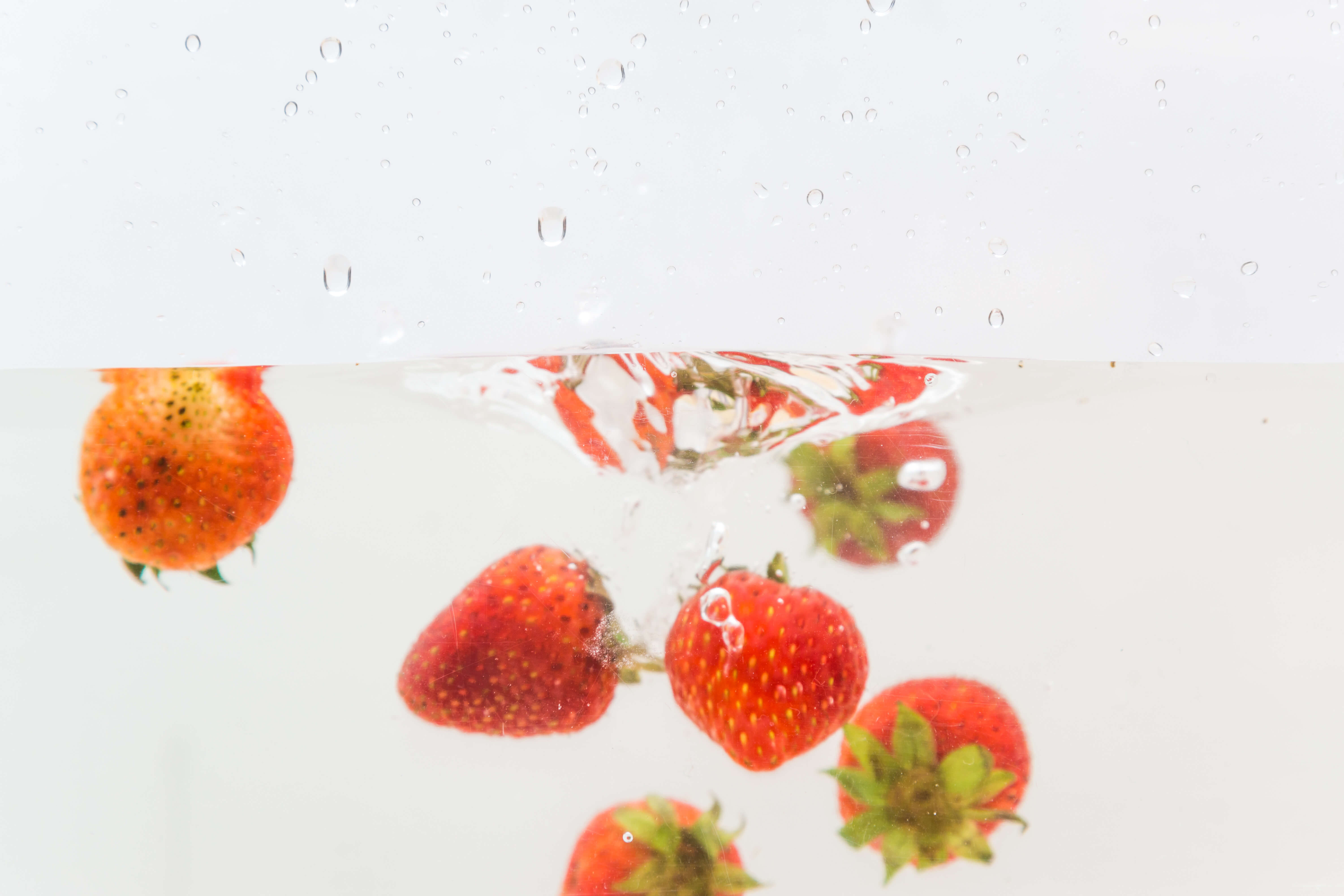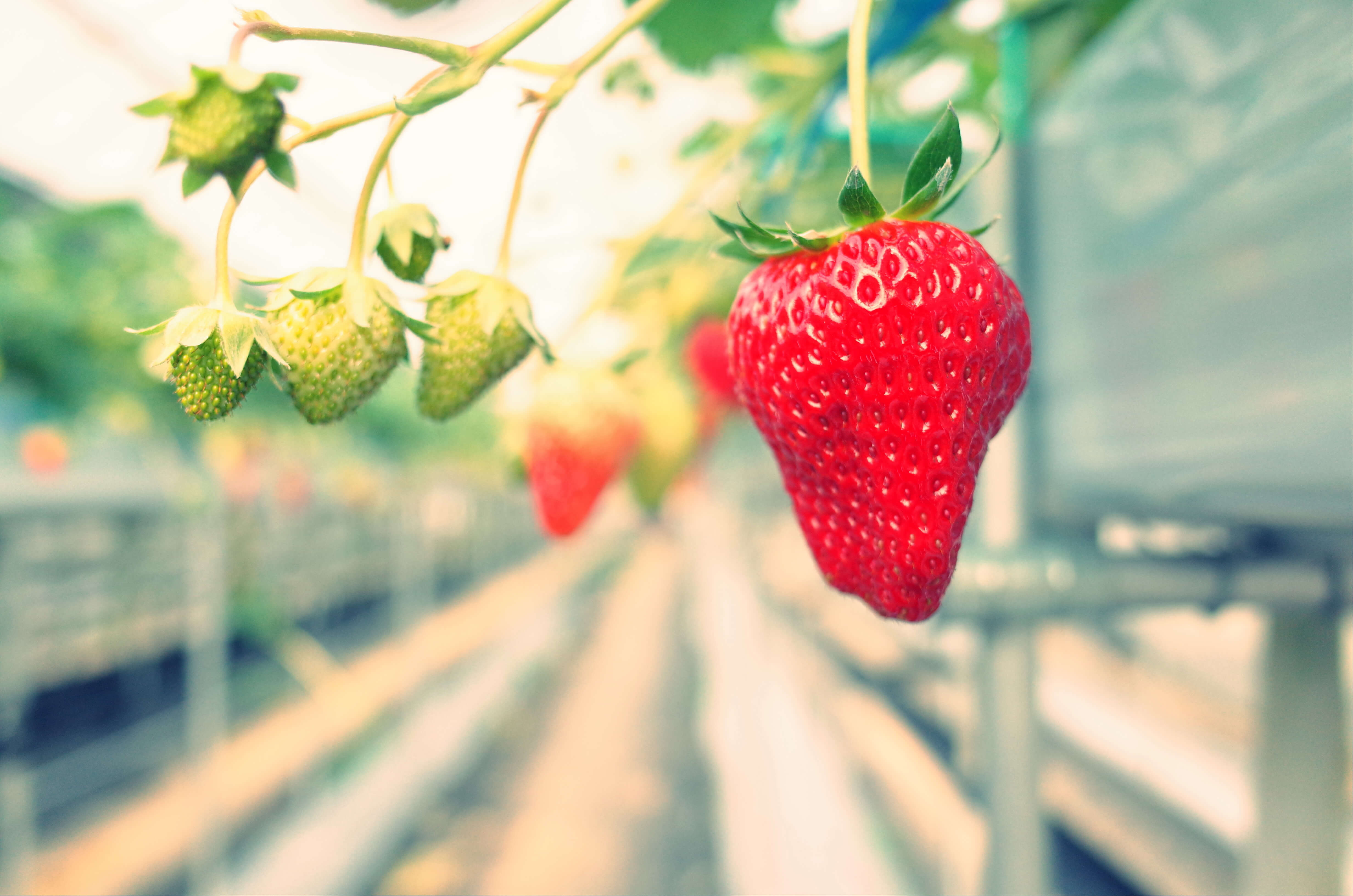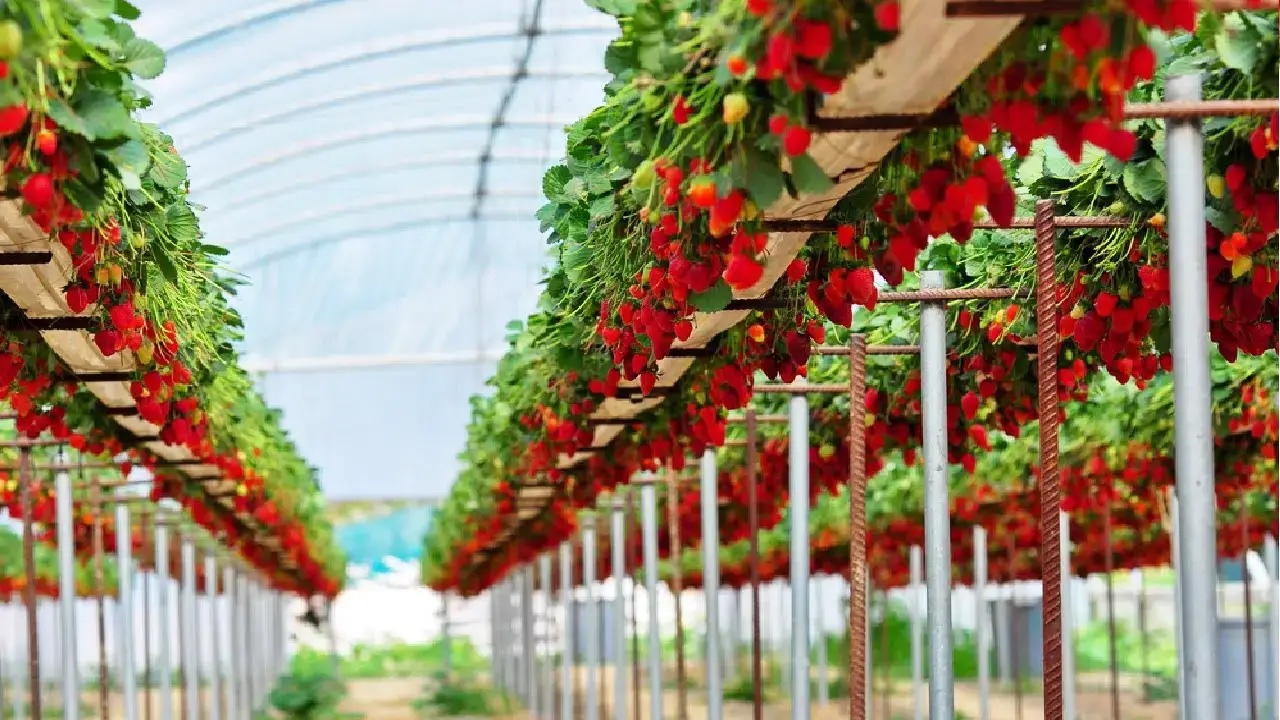Strawberries In Hydroponics
Do you miss the taste of fresh strawberries in the winter? Fresh strawberries can be hard to get in certain times and places, but with a hydroponic system, you can start growing strawberries in hydroponics type gardens all year from your home.
You can grow them faster, at any time of the year, and in any space. Easy as strawberry pie, don't you think?
I know you may not get sweet on the idea "berry" soon without the details, so let's take a slice out of that pie shall we?

What Do You Need to Grow Strawberries In Hydroponics?
The exact supplies you need will vary based on what type of hydroponic system you’re using, as well as whether you’re buying it premade or going the DIY route, but these are some of the basic things you’ll need with any situation:
- A Hydroponic System - The equipment you will need will vary based on what type of hydroponic system you have. Click the link here to compare systems, however, if this is a one-off test run, we recommend using the Kratky Method, or the Mason Jar technique. Click the links for more information on those.
- A Growing Medium - This is what fills the pot around your plants to keep them in place. You have a variety of different options for mediums, such as rock wool, coco coir and clay pebbles. You can use whichever one suits your budget or you happen to have handy.
- Strawberry Plants - You can either grow your strawberries starting from seeds, or from young strawberry plants. Seeds can take a long time to bear fruit, so we’d recommend starting with young plants. You can get starter plants at most garden centres - just make sure you wash all the soil off the starter plants and roots before planting them in your hydroponics system.
- Water and Nutrients - Since hydroponic plants can’t get nutrients from the soil around them, they take nutrients directly from the water they’re placed in. In order to get your plants what they need, you’ll need to buy hydroponic nutrients that you can put in your water. In addition, if you are using city water, you should have the water sit in a clean container for 24 hours to let the chlorine evaporate before using it in your hydroponic system (ideally, but not super critical).
- A Light Source - Plants need light to photosynthesize, so you’ll need to design your system with a light source in mind. If you’re growing outside or near a window, you can use natural light. If this isn’t a reliable option, you can get artificial lights like LEDs or other grow lights. Strawberries will need around 8-12 hours per day, so if you have artificial lights, you can keep them on that schedule for the duration of your strawberries’ life.
If your plants are having trouble with their environment, you may also need to buy things like individual nutrients or a pH correcting kit to get everything back to normal. You can buy these as your needs arise, but this list covers the basics you’ll need for any system.

How to Grow Strawberries Hydroponically
Set Up Your Hydroponic System
This is, of course, the first step to growing any hydroponic crop. This may be extremely easy or a bit more complex depending on which type of system you decide to use. We’ll go over some specific types of systems in a bit, but for now, we’ll focus on the general steps that most systems need.
Setting up your system can be as easy or as complicated as you make it. If you buy a premade system, you’ll probably just need to assemble the parts and get planting. If you decide to go the DIY route you have options as simple as cutting some holes in a bucket, or as complex as building your own deep water culture system.
Once you finish putting the parts of your system together, you’ll need to place it by the light source, plug in any electronics, and fill your reservoir with water and nutrients.
If you’re a beginner you’ll be happy to see that this section isn’t too long and complicated. Once planted, strawberries don’t need a huge amount of involvement or maintenance to grow.
Choose Your Strawberry Variety
When you go to buy your strawberries, you’ll likely have multiple varieties to choose from. You can always order seeds for a specific variety, but if you’re buying plants from the store (which is what we recommend) you may be limited by what’s available.
In general, day-neutral and everbearing strawberry varieties are best for hydroponics growers. Day-neutral berries are especially good if you’re growing indoors because the exact amount of light your berries get per day won’t affect them as much. These varieties will also produce berries year-round for multiple harvests.
Everbearing strawberry varieties are great because they allow you to take advantage of hydroponics systems' ability to grow all year. These berries generally produce one crop in the spring and another one in the fall, but if your garden is really successful, they might even produce 3 crops in a year.
You may also want to look into the strawberry varieties available because they can take different amounts of time to start producing fruits. If you’re looking for some suggestions of specific varieties, Chandler, Douglas, and Red Gauntlet are a few good options.
Plant The Strawberries
If you’re looking to get berries right away, you should start with young plants. These are the kind of strawberry plants you’ll generally find planted in soil at the store. You can buy these plants and transplant them into your hydroponic system.
In this case, you’ll need to take the plants out of the soil they came in, and rinse out the root system. This is important to make sure you don’t contaminate your water with anything that’s in the soil.
After this, you’ll put the plants in your net pots, and fill the rest of the pot with the medium of your choice. Make sure you water your plants right away once you put them in the system so that they can start growing.
If you decide to start with seeds instead, you’ll plant the seeds directly into a medium. We’d suggest Rockwool plugs, which are easy to use. For these, just place the seed inside the plug, put the plug in your pot, and fill any additional space with your medium. Be careful, though—sometimes it can even take years for strawberry seeds to mature enough to bear fruit.
Adjusting The Conditions Of Your System
After you plant your strawberries, you’ll need to double-check to make sure everything looks good. This is especially important in smaller hydroponic systems, because a little fluctuation in your nutrients, water level, or pH can seriously affect the whole system.
The main thing to check right away is the pH of your system. If you buy a system, it may come with a device, or you may need to buy it separately. For strawberries, the pH should be between 5.8 and 6.2. This is important because an imbalance in pH can make it harder for your plants to take in nutrients, and seriously affect their overall health.
In the first few weeks of growing your plant, you’ll also want to check your nutrient concentrations and water level frequently. In a small hydroponic system, it’s important to make sure all the levels are correct because one imbalance can really throw off your whole system. Checking regularly will allow you to ensure that everything is working correctly, and fix any issues if it’s not.
If you are using the Kratky system, you should measure and check the nutrient water at the outset, and you don't need to check again unless the plant is not growing.
It’s also important to monitor the temperature of your system. Strawberries thrive most in warmer temperatures, around 65-80 degrees Fahrenheit, so try to keep them in an environment that is around this temperature. If need be, you can always purchase extra equipment to regulate the temperature in your space.
If it just doesn't seem to be growing much, the amount of light is likely the culprit, especially if you are using an artificial source.
If you start to notice any issues in your plants, such as leaves drying up this is also a sign to check the nutrients and other conditions of your system. You can look up the specific symptoms your plant is experiencing to find out potential causes of any issues you see.
Pollinate Your Strawberries
In the natural world, strawberries are able to reproduce through the efforts of pollinators like bees. If you’re growing indoors, however, you’ll need to do this work yourself.
To hand-pollinate your plants, all you need is a small q-tip or paintbrush. Gently rub each flower with the brush or tip to transfer pollen from one flower to another. Some farmers growing larger systems will actually use bees to make pollination more efficient, but if you’re an individual grower, the DIY option will work just as well.
Maintaining Your Plants
Luckily, hydroponic strawberries don’t require a lot of maintenance. Some growers like to prune off extra leaves and runners from their plants. This isn’t absolutely necessary, but it can be helpful in order to let the plant spend more energy on growing fruit rather than leaves.
You can also clip back the flowers of your strawberries for the first 4-6 weeks. This is also not a necessity, but once that period is over, it will allow your strawberries to produce more fruit at a time, so the end result is worth it.
The most important part of monitoring your strawberries will probably be to keep an eye on them and make sure that their environment is balanced, and the plants don’t have any issues. Strawberries can be susceptible to some diseases like Mucor fruit rot or Powdery mildew, so you’ll need to check your plants to catch and treat these early if they do arise.
As you maintain your hydroponic garden over time, you’ll get a better idea of what it needs, and how to keep it happy. Remember, each plant and each environment is unique, so it’s ok if your garden doesn’t conform exactly to what you’ve read online.
Harvest Your Strawberries
Hooray!!! The moment you’ve been waiting for!
Strawberries will often be ready around 4 weeks after the plant starts to flower. You can tell if your strawberries are ready by the color and texture. The strawberries should be red all around and have only a slightly firm consistency.
Strawberries don’t need any fancy harvesting procedures. Once they’re ready, you can just pick them off the plant and enjoy!

As you can see, even if you're a beginner strawberries are a great plant to grow hydroponically! So get started today and watch your strawberries in hydroponics grow and grow! If you liked this article make sure you check out the rest of the website!
HOME > Hydroponic Gardening > Strawberries In Hydroponics (This Page)